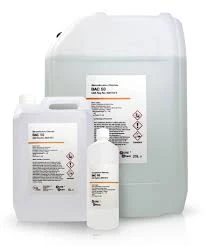pam flocculant
Understanding PAM Flocculants Their Role and Importance in Water Treatment
Polyacrylamide (PAM) flocculants are increasingly recognized as critical players in the water treatment industry. As environmental concerns grow and regulatory standards become stricter, the demand for effective and sustainable water purification solutions has surged. PAM flocculants are synthetic polymers that enhance the process of flocculation—a crucial step in the clarification of water, the removal of solids, and the improvement of water quality.
What are PAM Flocculants?
PAM flocculants are water-soluble polymers formed from acrylamide monomers. They can be classified into several categories based on their charge properties—non-ionic, anionic, cationic, and zwitterionic. Each type has distinct characteristics that influence its application. For instance, cationic PAM flocculants carry a positive charge and are effective in destabilizing negatively charged particles, making them suitable for municipal wastewater, sludge treatment, and ore processing.
How Do PAM Flocculants Work?
The mechanism by which PAM flocculants operate involves several steps. Initially, the flocculant molecules disperse in water, where they interact with suspended particles. These particles often exhibit repulsive forces due to similar electrical charges. When PAM flocculants are introduced, their polymer chains bridge the gaps between particles, facilitating the formation of larger aggregates or flocs. This process not only enhances sedimentation but also improves filtration efficiency, resulting in clearer water.
Applications of PAM Flocculants
PAM flocculants are utilized in various industries, including municipal wastewater treatment, mining, papermaking, and oil recovery. In wastewater treatment, they play a vital role in the removal of suspended solids and organic matter, thus reducing the overall turbidity of the water. By promoting the aggregation of smaller particles into larger ones, PAM flocculants lead to more efficient sedimentation and easier handling of sludge.
pam flocculant

In mining operations, PAM flocculants assist in the separation of valuable minerals from waste materials. By clarifying the process and increasing the yield of recoverable products, these flocculants contribute to the sustainability of resource extraction.
Advantages of Using PAM Flocculants
The use of PAM flocculants offers numerous benefits. One of the primary advantages is their versatility. They can be tailored to meet specific needs and conditions based on factors such as pH, temperature, and the types of particles present in the water. Additionally, PAM flocculants are effective at low concentrations, making them both economical and environmentally friendly.
Another important benefit is their ability to significantly reduce sludge volume. This reduction not only helps in lowering disposal costs but also minimizes the impact on the environment. The use of PAM flocculants can enhance the overall efficiency of water treatment systems, allowing facilities to operate more effectively within regulatory requirements.
Environmental Considerations
Despite their many advantages, the use of PAM flocculants raises some environmental concerns. The acrylamide monomer used in their production is considered toxic, and therefore, it is crucial to use flocculants that have been treated to minimize any residual acrylamide content. Manufacturers and users of PAM should adhere strictly to guidelines and regulations to ensure the safe application of these flocculants.
Conclusion
In summary, PAM flocculants are indispensable in modern water treatment processes. Their ability to enhance flocculation leads to improved water quality, efficient waste management, and effective resource recovery across various industries. As sustainability continues to take precedence in both environmental and industrial practices, PAM flocculants will undoubtedly remain a key component in the quest for cleaner water and greener solutions. Proper handling and regulation of these materials will be necessary to ensure that their benefits are realized without compromising environmental safety.
-
Pbtc Scale InhibitorPBTC: A Scale Protector for Industrial Water TreatmentNewsAug.05,2025
-
Organic Phosphonate: An Efficient Defender in the Field of Scale InhibitionNewsAug.05,2025
-
Hydrolyzed Polymaleic Anhydride: Green Pioneer in Scale Inhibition FieldNewsAug.05,2025
-
PAPEMP Polyamino Polyether Methylene Phosphonic Acid For SaleNewsAug.05,2025
-
Flocculant Water Treatment: A Pioneer in Purification in the Field of Water TreatmentNewsAug.05,2025
-
Benzyl Isothiazolinone: An Efficient and Broad-Spectrum Antibacterial Protective GuardNewsAug.05,2025





